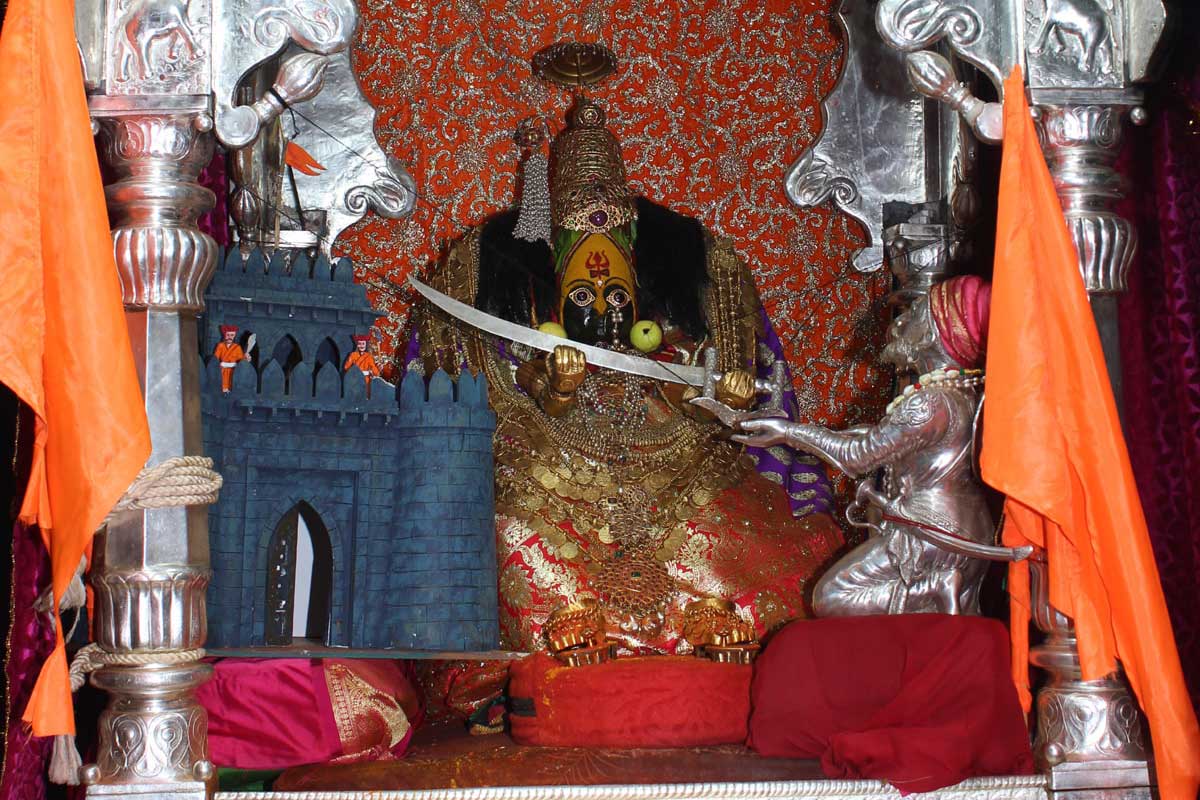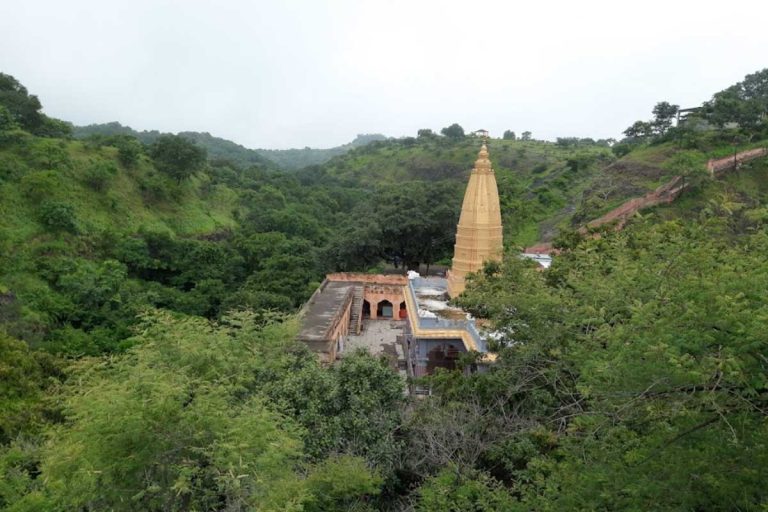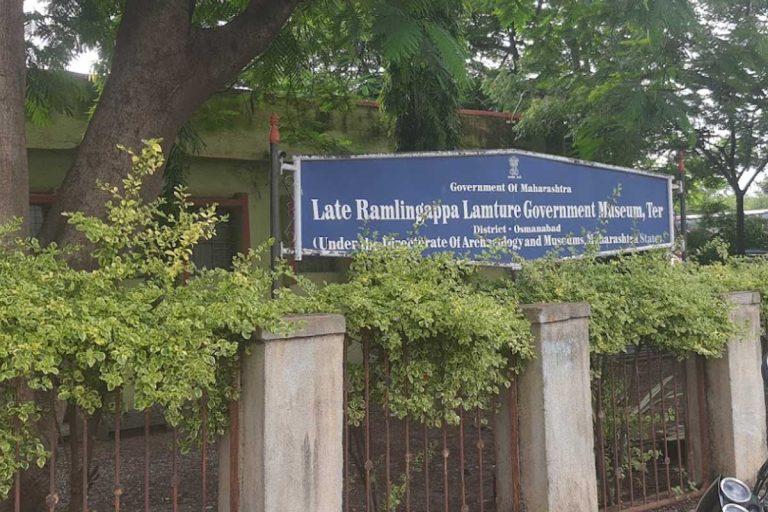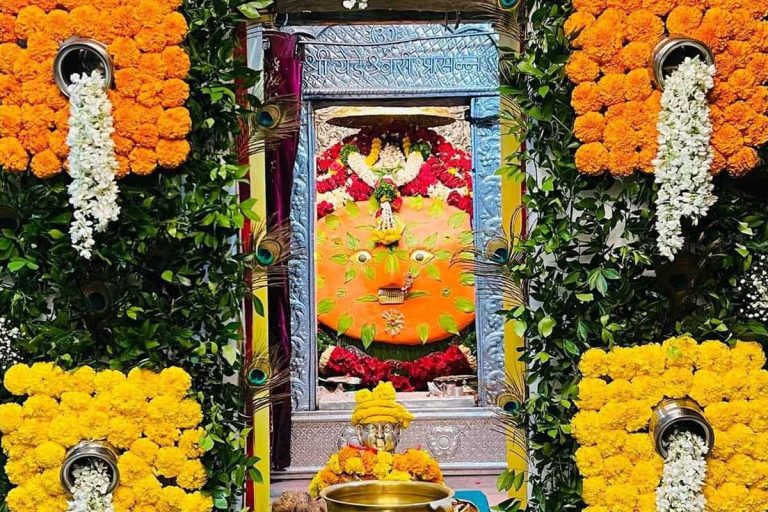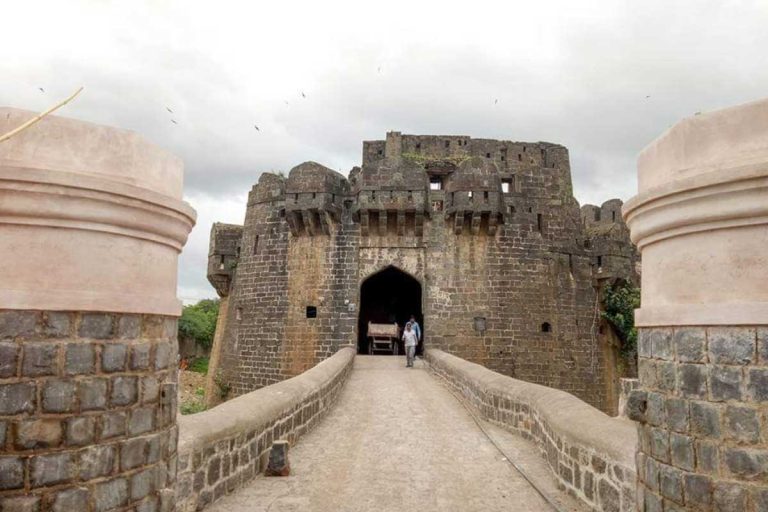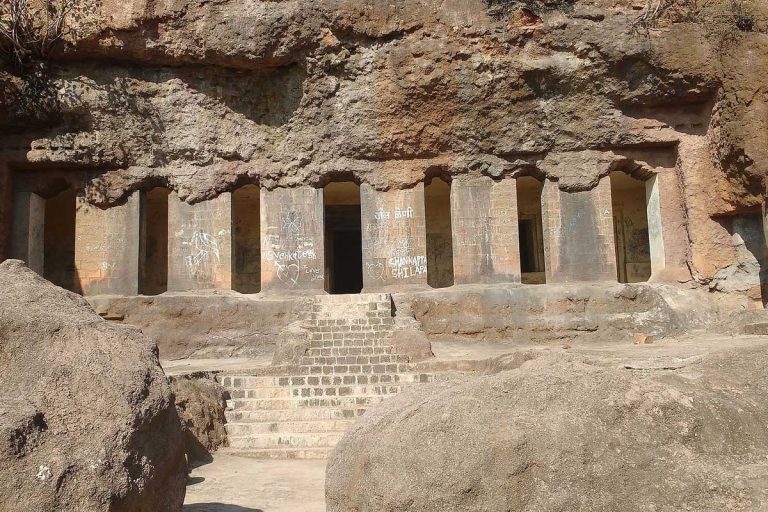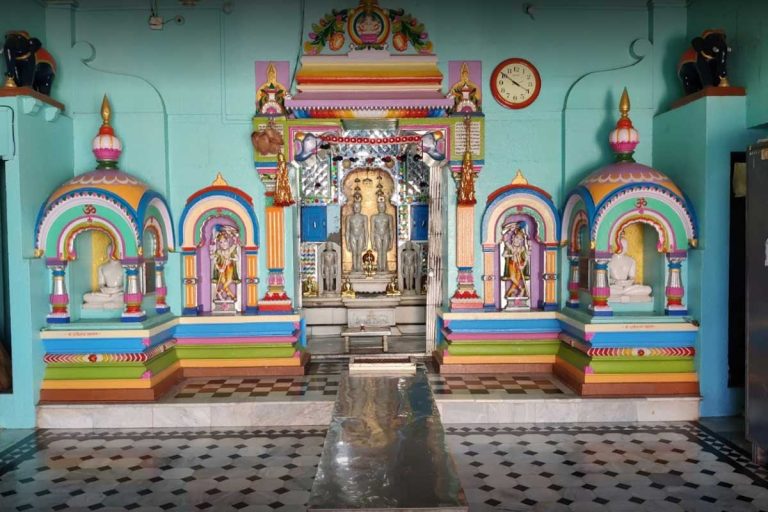Tulja Bhavani Temple
Tuljabhavani Temple is a Hindu temple in Tuljapur, Maharashtra. Tuljabhavani Devi is known as Kulswamini of Maharashtra. Chhatrapati Shivaji Maharaj used to visit this temple regularly.
The Tuljapur area of Shri Tuljabhavani Devi is a complete Shaktipeeth among the three and a half Shaktipeeths in Maharashtra. This goddess is popularly known as Bhagwati (Bhavani). Bhavanidevi of Tuljapur is the Kulswamini of Maharashtra, the inspiration deity of Maharashtra Kshatrateja, the inspiration and the worshiping deity of King Shri Shiv Chhatrapati, the founder of Swarajya. It is claimed that Shri Chhatrapati Shivaji Maharaj, the founder of Hindavi Swarajya, blessed the establishment of Hindavi Swarajya by giving Bhavani Talwar.
History
The city is situated on a ridge of Balaghat. A section of the temple is decorated with Hemadpanti. Historically and archeologically, this temple is considered to be of Rashtrakuta or Yadava period. The oldest inscription related to Tuljabhavani is dated at ‘Kati’ in Tuljapur taluka in AD. It can be seen in an inscription dated 1397.
Features
There are two major entrances to enter Sri Tuljabhavani Temple. One entrance is named as Raje Shahaji Mahadwar and the other door as Rajamata Jijau Mahadwar. There are stone steps leading to the temple of the goddess. After going down the steps, the devotees bathe and wash their hands and feet here before going for darshan at Gomukh Tirtha. Just in front is Kallol Tirtha. It is said in the case of Kallol Tirtha that three Tirthas came together for the bathing of the Goddess. At the main door of the temple is the Siddhivinayak of the right trunk. Here Aadishakti Adimaya and Annapurna Devi temples also attract attention.
After going further, the temple premises come into view. Devotees are provided with seating in this spacious premises. Sri Tuljabhavani Devi Temple can be seen from here. The door of the main body of the temple is covered with silver sheet, and there is a beautiful carving on it. It is here that the serene and radiant black stone idol of Sri Tuljabhavani is seen. This idol of three feet height is self-contained. Eight-armed Mahishasurmardini is standing on a throne with tufts of hair coming out from the crown of her head. Aiya holds trishul, bichava, arrow, chakra, conch, bow, panpatra and Rakshasa’s shanki in eight hands. There is an arrow on the back and the moon and the sun are on the right and left sides of the head of the goddess. Tuljabhavani’s right foot is seen on Mahisha the demon and his left foot is seen on the ground. Between the two legs is the head of the demon Mahishasura.
Sri Tuljabhavani Devi’s idol is Chal Murti. Here, instead of taking out the festival idol procession, the actual idol of Sri Tuljabhavani Devi is placed in a palanquin and a procession is taken around the temple. A total of three times a year, the idol is moved from the throne and placed on a bed outside the shrine. Later on the day of Vijayadashami, the mother is taken out in a palanquin procession during Simollanghana. A procession of Sri Yantra, Khandoba and Mahadev also takes place along with the Devi’s palanquin.
- Tulja Bhavani Temple Official Website: https://www.tuljabhavani.in/
- Tulja Bhavani Temple Contact Number : 2471242031
- Tulja Bhawani Temple Timings : 4.00 am to 10.00 pm
- Hyderabad to Tuljapur Bhawani Temple Distance : NH65 Via 5 hrs 48 mins (299.0 km)
- Pune to Tuljapur Bhawani Mandir Distance: 5 hrs 12 mins (293.0 km) Mumbai Hwy/Pune – Solapur Rd/Solapur – Pune Hwy And via NH65
- Hyderabad to Tulja Bhawani Temple Maharashtra : 5 hours 49 minutes (299.0 km) via NH65
- Tuljapur Temple Address >: Sri Tulja Bhawani Temple, Mahadwar Road, Jijamata Nagar, Tuljapur, Maharashtra 413601
How to go to Tulja Bhavani Temple:
- By Air : The nearest airport is at Osmanabad, which is 15 kilometers from Tulja Bhawani Temple.
- By Rail: Tulja Bhawani Mandir is 15 kilometers from the nearest railway station, Ummed.
- By Bus : Tuljapur is 294 km from Pune and 441 from Mumbai. Private vehicles and government buses can also be used to reach the temple.

